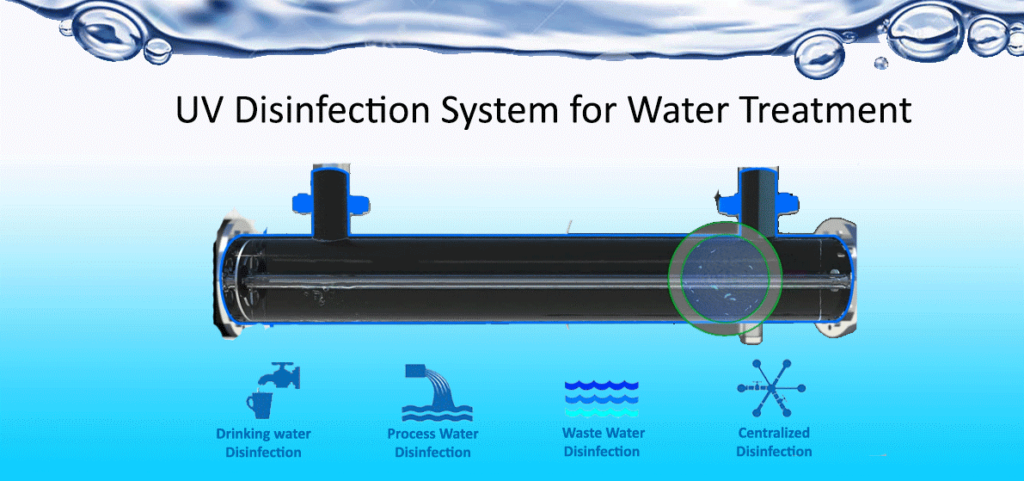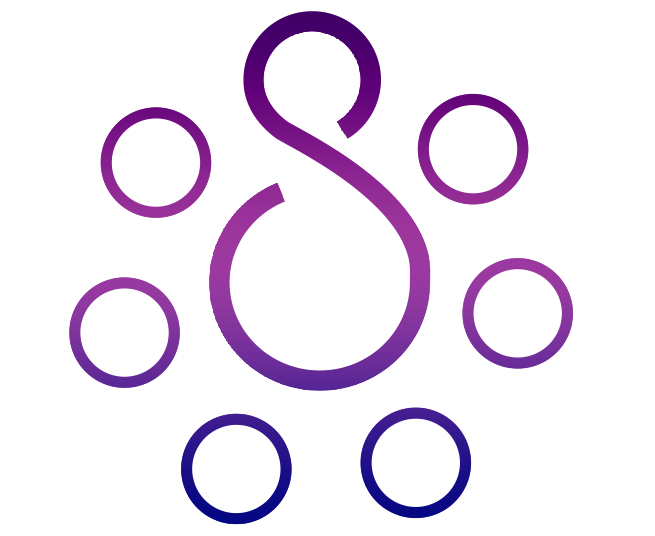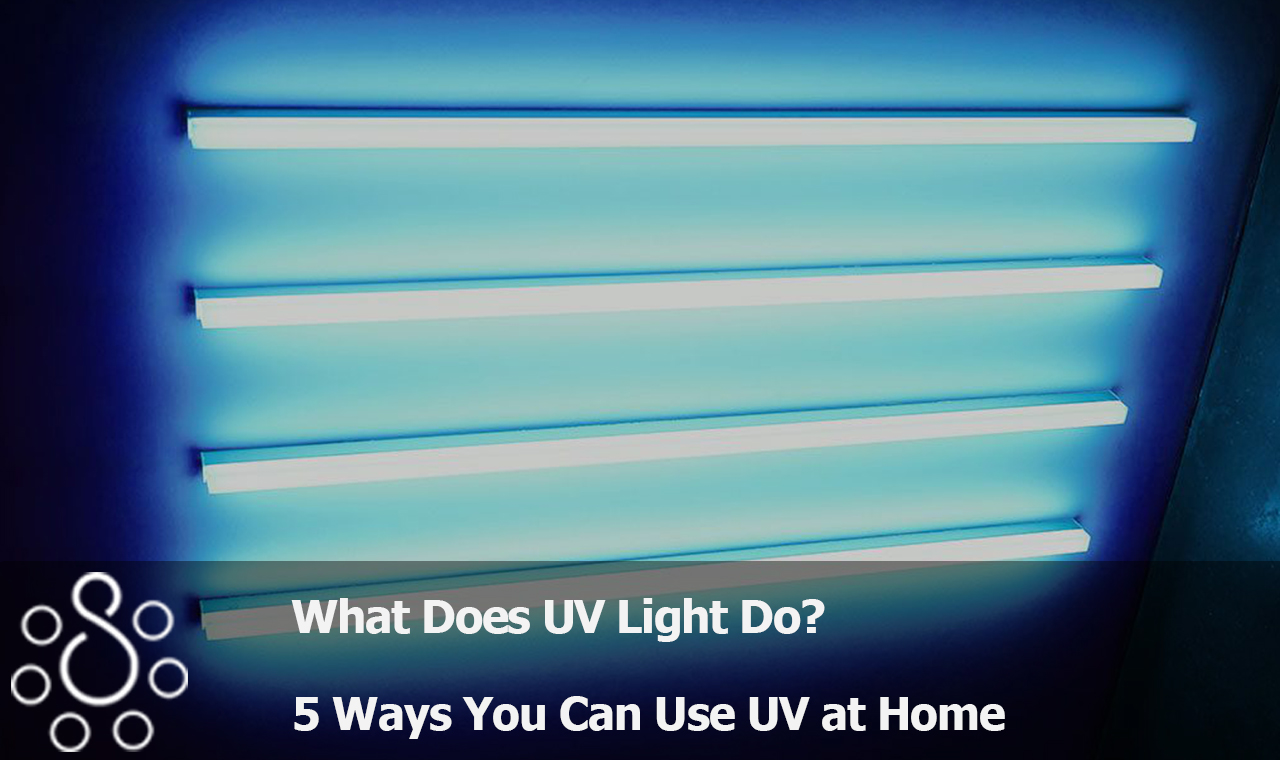Extreme UV light is a form of electromagnetic radiation that causes black-light posters to glow, as well as summer tans (and sunburns) to appear on the skin. On the other hand, too much exposure to UV light may be harmful to live tissue. Ultraviolet C lighting is one of the most effective ways to cleanse your home against viruses and other infections. Disinfecting surfaces and products is also crucial for personal safety, since we are all susceptible to viruses and bacteria. But we don’t know how to maintain our home tidy. In the continuation of this article, we are going to explain UV light and the ways you can use it at home. Follow us.
What is ultraviolet (UV) light?
Electromagnetic radiation is emitted by the sun and transferred in the form of waves or particles with varying wavelengths and frequencies. The electromagnetic (EM) spectrum is a large range of wavelengths that encompasses a wide range of frequencies. The electromagnetic spectrum is commonly split into seven sections, with the wavelengths dropping and the energy and frequency rising in a sequence of decreasing wavelength and increasing frequency. Radio waves, microwaves, infrared (IR), visible light, UV, X-rays, and gamma-rays are all typical names for various types of electromagnetic radiation. UV light is a kind of electromagnetic radiation that exists between visible light and X-rays in the electromagnetic spectrum. UV is commonly classified into three sub-bands including UVA, or near UV (315–400 nm), UVB, or middle UV (280–315 nm), and UVC, or far UV (180–280 nm). The term “vacuum or severe UV” refers to radiation with wavelengths ranging from 10 nm to 180 nm. Because these wavelengths are blocked by air, they can only propagate in a vacuum environment. “
Related article: Factors to Consider Before Getting UV Light Room Sanitizers
Ionization
Because of its high energy, UV light has the ability to disrupt molecular bonds. Because of their greater energy, ultraviolet photons have the potential to produce ionization, which is the process by which electrons break away from atoms. In turn, the ensuing vacancy has an effect on the chemical characteristics of the atoms, causing them to create or break chemical bonds that they would not have formed or broken otherwise. Depending on the application, this might be beneficial for chemical processes or harmful to materials and biological tissues. It is possible that this damage may be useful, such as when cleaning surfaces, but it can also be damaging, especially to the skin and eyes, which are the most negatively impacted by higher-energy ultraviolet B and ultraviolet C radiation.
UV effects
The sun is responsible for the majority of the natural UV light that individuals are exposed to. According to the National Toxicology Program, only about 10% of sunlight is UV, and only about one-third of it penetrates the atmosphere and reaches the ground (NTP).95 percent of the sun’s UV radiation that reaches the equator is UVA, while just 5 percent is UVB. UVC from solar radiation does not reach the Earth’s surface because ozone, molecular oxygen, and water vapor in the upper atmosphere absorb the shortest wavelengths of UV light entirely, resulting in no detectable UVC. Nonetheless, according to the National Toxicology Program’s “13th Report on Carcinogens,” “broad-spectrum ultraviolet radiation [UVA and UVB] is the strongest and most destructive to living beings.”
Other UV sources
A variety of artificial UV radiation sources have been developed to produce UV radiation. As defined by the Health Physics Society, “artificial sources” are defined as “tanning booths, black light sources, curing lamps, germicidal lamp sources, mercury vapor lamp sources, halogen lamp sources, high-intensity discharge lamp sources, fluorescent and incandescent source sources, and some types of lasers.” In order to produce UV light, one of the most common methods is to send an electric current through evaporated mercury or another gas. Tanning booths and disinfection surfaces are two applications for this sort of light that are prevalent. The lamps are also utilized in black lights, which are used to illuminate fluorescent paints and dyes to create a glowing effect. UV sources with a variety of wavelengths are also available, including light-emitting diodes (LEDs), lasers, and arc lamps, which are used in industrial, medical, and research applications.
Fluorescence
Many different things, including minerals, plants, fungi, and microorganisms, as well as organic and inorganic compounds, have the ability to absorb UV. Absorption causes electrons in a substance to move to a higher energy level as a result of the absorption. As a result of their energy absorption, these electrons may then return to a lower energy level in a succession of smaller steps, releasing a part of the absorbed energy in the form of visible light. It is possible to employ fluorescence-exhibiting materials as pigments in paint or dye because they absorb invisible ultraviolet light and re-emit it at visible wavelengths, making them look brighter in sunlight. They are often used for signs, safety vests, and other applications where great visibility is essential, such as road signs and construction sites.
Related Article: Does UV light kill viruses and germs?
UV light and Disinfection
UV radiation, in a variety of forms, is often used for disinfection in healthcare institutions, food production facilities, and agricultural settings, among other applications. Because of its shorter wavelength, Far-UV (UV-C) is a very efficient disinfection technique. Far-UV light may induce the physical annihilation of viruses, bacteria, and fungus, preventing them from infecting or harming humans. In addition, since far-UV radiation can accomplish this destruction swiftly and without the use of potentially toxic chemicals, it is a promising candidate for use in infection control applications.

UV light is one of the most effective ways to sanitize your home because:
· UV light breaks down the molecular connections that keep viruses and bacteria’s DNA together.
· UV light is a particularly attractive alternative for cleanliness since it destroys germs without hazardous chemicals and is independent of medicine resistance.
· UV sanitation products, such as portable wands, phone sanitizers, and toothbrush cleansers, have been shown to be very efficient against germs and are available in a number of formats.
Disinfect your home with UV-C light
When it comes to disinfecting your house against viruses and other pathogens, ultraviolet C lighting is one of the most efficient methods available. It is possible that a tidy house is not necessarily a happy home. However, it may undoubtedly make you feel happy and increase your overall feeling of well-being if done correctly. The majority of us consider our home to be a secure environment. During lockdown, it has become the center of our world since it is where we go to relax and decompress. In addition, disinfecting surfaces and items is important for feeling and being secure since we are all at danger of getting or transmitting viruses and germs. We don’t know how to keep the things in our house clean, however.

We are all concerned about the well-being of our loved ones, but throughout and after this epidemic, there is a lingering question in the back of our minds about whether we are doing enough to safeguard them from being exposed to viruses and germs in the environment. Our Philips UV-C disinfection lamps may have a significant impact in the battle against viruses and germs by providing an additional layer of protection.
Cleaning and disinfecting tiny and personal items by UV light
UV-C is a wavelength of light that is invisible to the human eye. UV-C is produced by the sun as part of the sunlight, but it is filtered out by the Earth’s atmosphere as it travels through the atmosphere. It may, however, be generated artificially with the use of specific bulbs and tubes, and at a wavelength of 254 nm, it is very powerful in inactivating viruses, bacteria, and mold by breaking down their DNA and RNA, respectively. When tested in the laboratory, our UV-C light sources were able to decrease SARS-CoV-2 (COVID-19) on a surface to levels below detectable thresholds in as little as nine seconds. Given the difficulty of reproducing laboratory settings in real-world scenarios, we typically advise that the disinfection cycle be monitored every few minutes. The Philips UV-C disinfection box is our newest product, which is targeted squarely at the home market. This device, which is equipped with Philips UV-C lights, offers a quick and efficient solution to kill potentially harmful viruses, bacteria, and germs—all in just minutes.
Related Article: Why We Need UV-C Disinfection

The disinfection box was intended to be simple to use. Simply fill the container with several products, shut the lid, and then go about your business as usual. In addition to toys, keys, mobile phones, and wallets, the disinfection box may be used to disinfect a variety of other goods. When the lid is opened, the box is meant to shut down automatically, eliminating any possibility of light escaping. Operation of the box is straightforward thanks to logical controls, a bright digital display, and a compact flip-up lid.

How to disinfect a room’s surfaces by UV light
The Philips UV-C disinfection desk light, which was initially released in Asia last year, is meant to cleanse room surfaces. In a few minutes, it may turn viruses, bacteria, molds, and spores harmless. “The UV-C desk light is particularly successful in terms of eliminating germs and inactivating viruses,” says Sau Hong Lim, Signify’s Head of Consumer Customer Segment Management in Greater China. “It also has revolutionary safety features like motion detection and voice alarm.” The importance of safety cannot be overstated. UV-C light may harm your skin and eyes, so neither you nor your pets should be exposed to it directly. UV-C light exposure should also be avoided by your plants. Our UV-C lighting, on the other hand, is meant to be used safely and has been demonstrated to be a potent method of chemical-free disinfection. People and animals must leave the room before the disinfection cycle can begin. Plants should be protected, and entry to the room should be restricted. Our UV-C light disinfection desk light is packed with various safety features, including a timer, motion sensor, and an audio warning to leave the area. Depending on the size of the space, different disinfection periods are recommended. However, on average, a bathroom takes 15 minutes, a bedroom 30 minutes, and a living room 45 minutes to complete.
Related Article: Does UV Light Kill Coronavirus?

Five practical applications of UV light disinfection
UV disinfection has 5 practical applications as a facilities manager, whatever equipment you purchase must have a specific function that is well defined. It is true that UV disinfection may be used in a wide range of situations, making it an excellent investment for many different sorts of institutions. The following are five methods that a wide range of establishments and also home may make good use of ultraviolet disinfection.
Disinfection of the Air
To a certain degree, every place that has to disinfect air spaces may do so with the help of a UV lamp. Because adequate contact between the air and the UV light is required, this method of disinfection is more effective when the air is calm or stagnant rather than when the air is moving. Several facilities have chosen to add UV disinfection lamps at the top level of the room in order to boost the efficiency of air disinfection. As the air naturally circulates, the air will be cleaner. Buildings may also opt to place UV lights near cooling system coils and drain pans, including air conditioners and refrigeration machines, to prevent germs from developing in those chilly, damp environments and subsequently being discharged into the environment.

Cleaning and disinfection of drinking water and waste water
UV light may also be used to sterilize water and even for wastewater treatment in some facilities. Because UV disinfection is a physical process that does not require the addition of any chemicals to the water to clean it, it may be a highly safe and effective alternative for water purification. UV radiation may help to lower the prevalence of parasites, which can be resistant to chemical disinfection and are thus beneficial. However, although wastewater treatment must be carried out on a much bigger scale, ultraviolet light may play an important part in this process as well, even assuming the place of chlorination in certain cases. While UV light is not employed as a primary disinfection strategy in many urban areas, it has become more prevalent as part of the wastewater treatment process in these places.

Disinfection of the Surface
No one should be surprised to learn that UV light may be used to disinfect surfaces in healthcare institutions and other environments. As a matter of fact, UV radiation has the ability to kill active viruses and other pathogens on surfaces in a matter of seconds. Using ultraviolet light in healthcare facilities may be much more efficient and successful than using conventional cleaning and disinfection methods in this situation.
Cleaning and disinfection of equipment by UV light
Beyond disinfecting fixed surfaces such as counters, tables, and floors, ultraviolet light is becoming more popular as a disinfection method for electronic equipment. Scientific environments that are in danger of contamination, for example, may use UV light to disinfect eyewear, glassware, and other laboratory equipment. Like other uses, UV light has the advantage of being efficient while also being dry and uncomplicated, as opposed to washing or bleaching, which may leave residue and moisture behind in certain cases.
Disinfection of Food and Beverage
The use of UV light in food and beverage disinfection combines the efficacy of UV light on surfaces with the effectiveness of UV light on liquids. It has been shown that ultraviolet disinfection is successful in food processing facilities when used to disinfect items such as conveyor belts that are normally difficult to clean completely. When the proper materials are applied, these sorts of surfaces may be disinfected without causing the equipment to become less effective or last longer.

There are a variety of applications for which UV light may be utilized as a disinfection technique, and it is vital to examine which kind of UV light is being employed. When it comes to bacteria and viruses, far-UV and near-UV may have quite distinct impacts. We encourage you to learn more about the use of far-UVC in disinfection. Vaccines are on the way, but UV-C radiation is still required. This is due to its ability to guard against a wide range of diseases and viruses.

